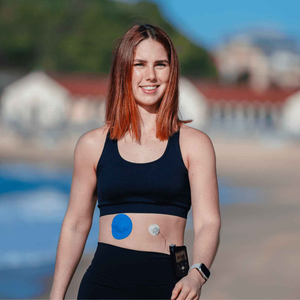At the present day, diabetes is one of the biggest public health challenges around the world. Did you know that people have been aware of the disease in one form or another for over 3000 years?
The early history of diabetes is sadly filled with a large amount of pain and suffering. However, thanks to the brilliant minds who have dedicated their lives to studying this disease, diabetes is no longer a death sentence. People living with Type 1 or Type 2 diabetes can live a long and happy life.
Earliest Mention
German physicians Oskar Minkowski and Joseph von Mering are often credited with the discovery of diabetes in 1899. Without any doubt, their experiment helped understand the role of the pancreas in regulating blood glucose levels. However, the earliest mention of diabetes is actually recorded around 3500 years ago, in 1552 BC. A physician from Egypt by the name of Hesy-Ra, documented a mysterious ailment that caused frequent urination and resulted in excessive weight loss.
Interestingly, there are also records from ancient India that describe people using ants to detect the disease by presenting urine to them. The ailment was called ‘madhumeha’, which translates to honey urine.
It was in the fifth century BCE when Indian and Chinese medical practitioners deduced that the disease had two variations. They noted that what we know today as type 2 diabetes, was more common in the wealthy. Possibly implying that these people ate more and were less physically active than the rest.
Another significant contributor to the history and discovery of Diabetes is Matthew Dobson, an English doctor who confirmed that the glucose levels in the urine of people with diabetes were, in fact, higher than normal. He further observed that the disease was chronic in some individuals but fatal for others, further distinguishing the different types of the disease.
Early Treatments of Diabetes
The earliest treatment for diabetes came from ancient Indian medicine, where people were advised to eat certain types of beans to lower their blood sugar levels. The earliest mention of this type of treatment was found in a text called ‘Charaka Samhita’, written somewhere between 300 BC and 200 AD. The Greeks also suggested that the disease could be cured by exercise and specifically recommended horseback riding, believing that the activity would reduce the need to urinate frequently.
Over the centuries, many treatment options have been recommended for people with diabetes. There are mentions of things like fasting, narcotics, vegetables and even a carb-free diet, none of which however, proved to be effective.
The Discovery of Insulin
Oskar Minkowski and Joseph von Mering conducted an experiment in 1889 and discovered that removing the pancreas of a dog lead to it developing diabetes. In 1910, Sir Edward Albert Sharpey-Schafer, an English physiologist, deduced that diabetes developed due to the lack of a specific chemical in the pancreas which he later named Insulin. Moving on to 1921, Frederick Banting, a Canadian scientist, worked on purifying Insulin from cows to produce the first-ever effective and viable treatment for diabetes.
In 1922, a young boy by the name of Leonard Thompson who lay dying in Toronto General Hospital, was given the first ever insulin injection. Leonard Thompson lived for 13 years after his initial treatment, eventually dying of pneumonia, hence proving the success of the treatment.
Even though insulin injections became a successful way to help people with diabetes, it soon became noticeable that some cases were unresponsive to the treatment. In 1936, a British doctor named Harold Percival Himsworth, clearly differentiated the two types of diabetes, defining them as “insulin-sensitive” and “insulin-insensitive” diabetes. These are now commonly known a Type-1 and Type-2.
Diabetes treatments have continued to improve until the current day, as scientists all around the world dedicate their lives to curing the disease. Modern day technologies such as CGM’s (constant glucose monitors) and Insulin Pumps have revolutionised diabetes management. The future is certainly looking bright.
Wrapping Up
Empower your diabetes journey with confidence! Ensure the safety and longevity of your CGM with our high-quality adhesive patches. Just as history shaped the progress of diabetes care, let our patches shape a secure future for your continuous glucose monitoring. Click here to discover peace of mind and uninterrupted CGM performance with our CGM Adhesive Patches!
| Click here to learn about some of the exciting research that is happening towards finding a cure for Type 1 diabetes. |





